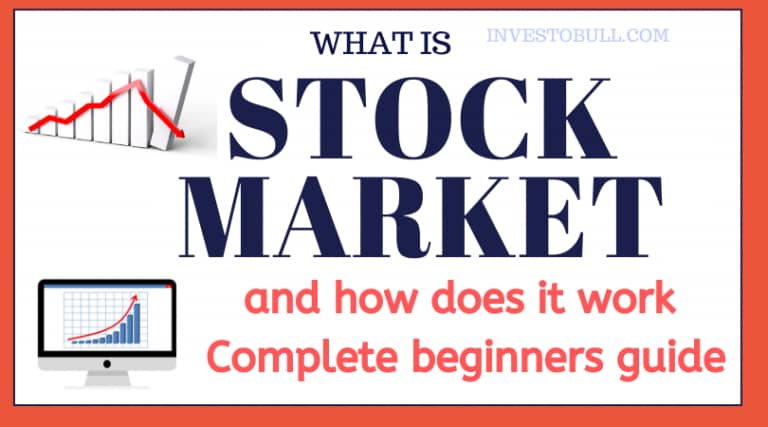Investing in stocks is like being on an exciting adventure. You pick companies you believe in, watch their prices rise, and hope to make money. But just like any adventure, it’s important to know when to stop or change direction. Selling a stock at the right time can protect your money and help you grow your wealth. But how do you know when the right time is?
Many people hold on to stocks for too long, hoping the price will go back up, but sometimes it doesn’t. According to a study by Dalbar, a financial research firm, the average investor earns much less than the market because they often buy high and sell low — mostly due to emotions and not knowing when to sell.
So, how can you avoid this trap? How do you spot the signs that it’s time to sell a stock before it’s too late? In this article, we’ll explore five important signs backed by expert advice, research, and real-world examples. By the end, you’ll be better prepared to make smart decisions with your investments.
Have you ever wondered why some investors make money while others lose it? Could it be that knowing when to sell is just as important as knowing when to buy?
—
Why Selling Stocks Matters: The Expert View

Warren Buffett, one of the richest investors ever, once said, “The stock market is designed to transfer money from the active to the patient.” But he also warns that patience doesn’t mean holding on forever. He sells stocks when the company’s business changes for the worse.
Buffett’s approach is simple: buy great companies at fair prices and keep them as long as they remain great. But if the company’s fundamentals change — like profits drop or competition gets too tough — it’s time to sell.
Research from MFS Quantitative Solutions shows that stocks flagged by their “sell signals” underperform their peers by about 8.6% annually. That means ignoring these signs could cost you a lot of money over time.
A study from the University of Chicago also found that investors who stick to clear rules about selling tend to do better than those who sell based on emotions.
—
5 Signs It’s Time To Sell a Stock
1. The Company’s Fundamentals Are Getting Worse
When you invest in a stock, you’re really investing in a company. If the company starts struggling, your stock will likely suffer too.
- What are fundamentals? These are the important numbers and facts about a company’s health — like profits, sales, debt, and how well it competes.
If these numbers start going down, it’s a warning sign.
- Falling profits: If a company’s earnings drop for several quarters, it means they’re making less money.
- Losing market share: If competitors are taking customers away, the company might be in trouble.
- Rising debt: If the company owes more money than it can handle, it could face serious problems.
- Cash flow problems: If the company isn’t generating enough cash to pay bills, that’s a bad sign.
Example: Blockbuster was once the king of movie rentals, but it failed to adapt to streaming technology. Its fundamentals worsened over time, leading to bankruptcy. Investors who sold early avoided big losses.
Peter Lynch, a famous investor, said, “Know what you own, and know why you own it.” If the reasons change, it might be time to sell.
2.Stock Hits Your Price Target
Before buying a stock, smart investors set a goal price — a price at which they plan to sell and take profits. This helps avoid greed and emotional decisions.
– If you bought a stock at $50 and set a target price of $100, selling when it hits $100 locks in your gain.
– Trying to hold out for more can be risky because prices can drop quickly.
– Setting price targets helps you stay disciplined.
According to research, a study by Dalbar found that investors who set clear goals for selling tend to make better returns than those who don’t.
Tip: Use tools like price alerts on your brokerage app to notify you when your stock reaches your target.
3. The Market or Sector Outlook Turns Negative
Sometimes, it’s not just the company but the whole industry or market that’s facing problems.
– New laws or regulations can hurt entire sectors.
– Economic changes like recessions can reduce demand.
– Competition from new technologies can disrupt industries.
Example: Coal companies have struggled due to environmental regulations and the rise of renewable energy. Investors who sold coal stocks early avoided losses.
Morning Star, a leading investment research firm, reports that while some sectors like technology are growing fast, others like traditional retail are shrinking.
Action step: Keep an eye on news and reports about the sectors your stocks belong to.
4. The Stock Shows Multiple “Sell” Signals in Quantitative Models
Quantitative models use math and data to analyze stocks. They look at things like valuation (how expensive a stock is), momentum (price trends), and financial health.
– If a stock scores poorly on several factors, it’s often a sign to sell.
– These models help remove emotions from decisions.
Example: MFS Quantitative Solutions uses such models and has found that stocks flagged for selling underperform the market.
- Why it matters: These models are based on years of data and can help you avoid holding onto bad stocks.
5. You Need to Rebalance or Free up Cash
Sometimes, selling isn’t about the stock itself but about your overall portfolio or financial needs.
– If one stock grows to be too big a part of your portfolio, it increases risk.
– Selling some shares helps keep your investments balanced.
– You might also need cash for other goals like a car, or other emergencies.
Tip: Regularly review your portfolio and sell stocks that have become too large or no longer fit your goals.
—
How to Sell Stocks Smartly: Practical Tips

Don’t Panic Sell
It’s easy to get scared when a stock price drops suddenly. But selling in panic often means selling at the worst time.
– Take a deep breath.
– Check if the company’s fundamentals have changed.
– Look for long-term trends, not just short-term price moves.
Set Stop-Loss Orders
A stop-loss order automatically sells your stock if it falls to a certain price. This helps limit losses.
– Example: If you buy a stock at $50, set a stop-loss at $40.
– If the stock drops to $40, it sells automatically.
This takes emotions out of the equation.
Use a Checklist Before Selling
Create a checklist of reasons to sell a stock. For example:
– Declining profits for 3+ quarters
– Loss of market share
– Negative sector outlook
– Stock hits price target
– Need to rebalance portfolio
If a stock meets several points, consider selling.
—
Real-Life Stories of Selling Stocks
Kodak: A Lesson in Adaptation
Kodak was a giant in photography but failed to switch to digital cameras. Investors who held onto Kodak stock lost a lot when the company went bankrupt.
Lesson: Watch out for companies that don’t adapt to change.
Enron: The Danger of Fraud
Enron was an energy company that collapsed because of fraud. Investors who ignored warning signs lost everything.
Lesson: Always do your homework and be cautious if a company’s finances seem too good to be true.
—
Frequently Asked Questions (FAQs)
Q1. Should I sell if the stock price drops a little?
A: Not always. Short-term dips happen. Look for changes in the company’s fundamentals before selling.
Q2. How often should I check my stocks?
A: At least once every three months to catch any problems early.
Q3. Can I trust expert advice?
A: Expert advice is helpful but always think about your own situation.
Q4. What if I’m scared to sell and miss out on gains?
A: Set clear rules before buying to avoid emotional decisions.
—
Investing is exciting but knowing when to sell is key to success. By watching for these five signs — worsening fundamentals, hitting your price target, negative market outlook, poor quantitative signals, and portfolio needs — you can protect your money and grow your wealth.
Selling a stock isn’t giving up. It’s making a smart choice to keep your investments healthy. So, are you ready to take charge and make the right moves?
—
Additional Resources
– [Investopedia: When to Sell Stocks](https://www.investopedia.com/articles/stocks/07/sell.asp)
– [Morningstar Market Outlook](https://www.morningstar.com/articles/market-outlook)
– [Dalbar Investor Behavior Study](https://www.dalbar.com/Investor-Behavior-Studies)
– [MFS Quantitative Solutions](https://www.mfs.com/en-us/solutions/quantitative-investing.html)










i874yc
ng3d51
1jtb3l
gdxqmj